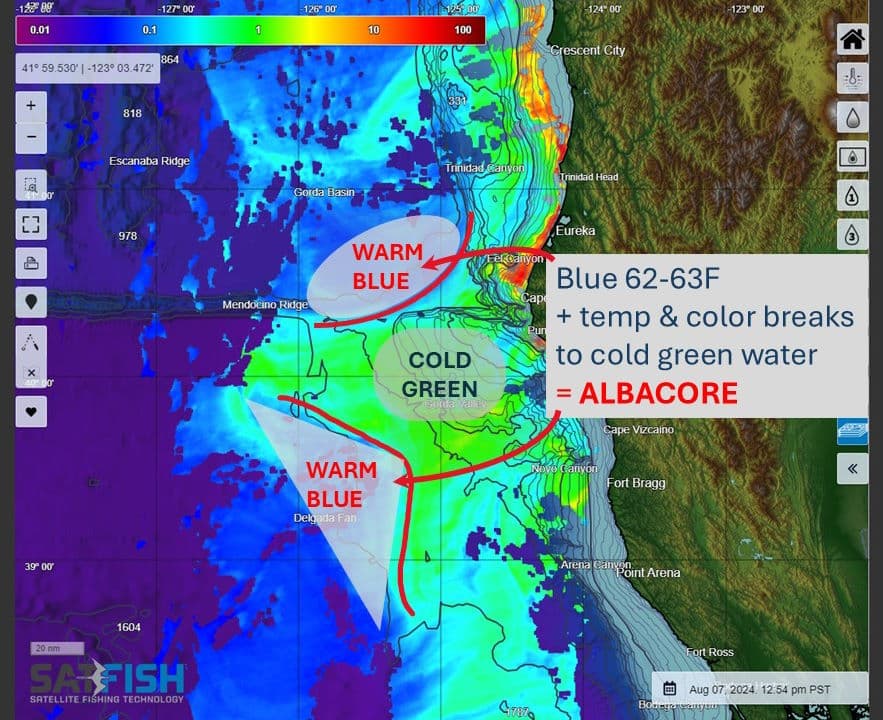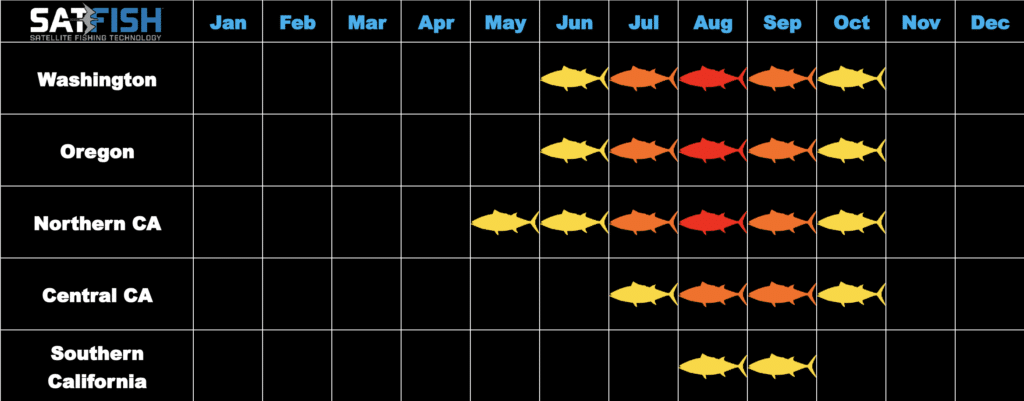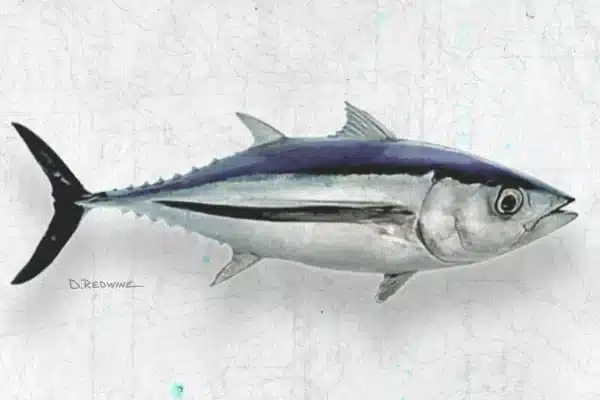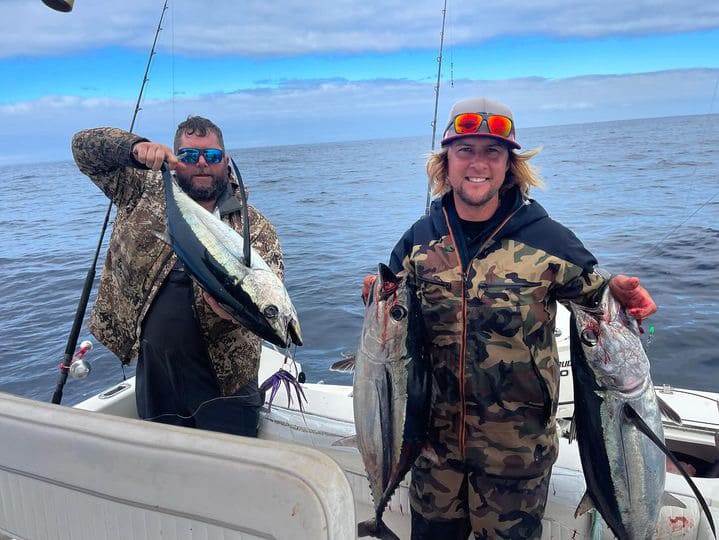Description
The albacore is a species of tuna that is found in temperate and tropical waters across the globe in the epipelagic and mesopelagic zones. The albacore tuna has exceptionally long pectoral fins compared to other tuna species. This tuna has a dark blue and shades of silvery white throughout. This particular species can weigh up to 80 pounds. Albacore are pelagic predators that eat a variety of fish, crustaceans, and cephalopods. These tuna have an amazing quality of meat, making them one of the more sought-after tuna species.
Ideal Conditions for Albacore
SatFish maps show you where to find ideal conditions for Albacore:

- Sea Surface Temperature:
58-68°F / 14-20°C
(60-66°F / 15-18°C is ideal) - Water Color / Chlorophyll:
Clean purple-blue to blue, 0.01-0.5 mg/m3 - Bathymetry:
Deep water, especially around canyons & seamounts
Albacore are most commonly located along temperature breaks and chlorophyll edges, especially where cool, nutrient-rich water meets slightly warmer offshore currents. Seamounts, offshore banks, and upwelling zones often hold bait like anchovy, sardine, and squid, which are key forage for albacore. While they’re less associated with floating debris than species like mahi or yellowfin, albacore will work the edges of structure-rich areas when food is concentrated. Productive zones typically include current breaks, canyon edges, and frontal zones where clean blue-green water overlaps with subtle changes in temperature and productivity. These conditions make for high-percentage trolling lanes when targeting longfin.
Albacore Migration Patterns
Albacore tuna are long-range migrators that follow cooler, clean water and big concentrations of bait. On the West Coast, they typically start showing up off California, Oregon, and Washington from late spring through early fall when surface temps hit that sweet spot — usually between 58 and 66 degrees. Their inshore push is tied to the California Current, which brings cool, nutrient-rich water and stacks up anchovy, sardine, and squid along temperature breaks and offshore structure.
You won’t find albacore in the Gulf of Mexico or tropical zones like yellowfin — they prefer temperate water and spend most of their time offshore. Down around Baja, they can be found farther out, and their numbers tend to pick up in the summer and early fall as conditions line up.
Spawning happens way out in the western Pacific, in warmer waters between Hawaii and the equator, mostly between March and July. After that, juvenile albacore make their way east toward the U.S. coast as they grow. So if you’re watching SatFish for the right temps and chlorophyll breaks along the shelf edge or canyon lines, you’re already thinking like an albie hunter.
SatFish Regions Where Albacore Can Be Found
- Washington (all regions)
- Oregon
- Northern CA
- Central CA
- Southern CA (rarely)

How to Catch Albacore
Albacore are classic schooling tuna, usually found in tightly packed groups that stick together by size. When they’re feeding, they can push bait to the surface in foaming blitzes, especially when conditions are right — clean, cool water with bait stacked on a temperature break. Smaller fish often feed near the surface, while larger longfin may hang a little deeper, especially around structure or current edges.
Here are a few proven fishing techniques to target albacore:
Trolling: Still the bread and butter for longfin. Run cedar plugs, small feathers, daisy chains, or diving lures behind the boat at 6 to 8 knots. Albacore love clean water along temperature and chlorophyll breaks, especially just offshore of sharp bathymetric changes like canyon edges or ridges.
Live Baiting & Chunking: When the fish are around but not coming up, live anchovies or sardines tossed on lighter line can be deadly. Drifting and chunking with sardine pieces can also turn on a school under the boat. Keep one bait back deeper — bigger fish often hang just below the main school.
Bird Activity: Albacore often shadow terns, shearwaters, and petrels that track bait balls. If you see scattered birds working low and tight to the water, that’s your cue to slow down and start searching for signs.

From Our Blog
Resources & Further Reading
NOAA Fisheries – Pacific Albacore Tuna
Washington Dept. Fish & Wildlife – Albacore Tuna


